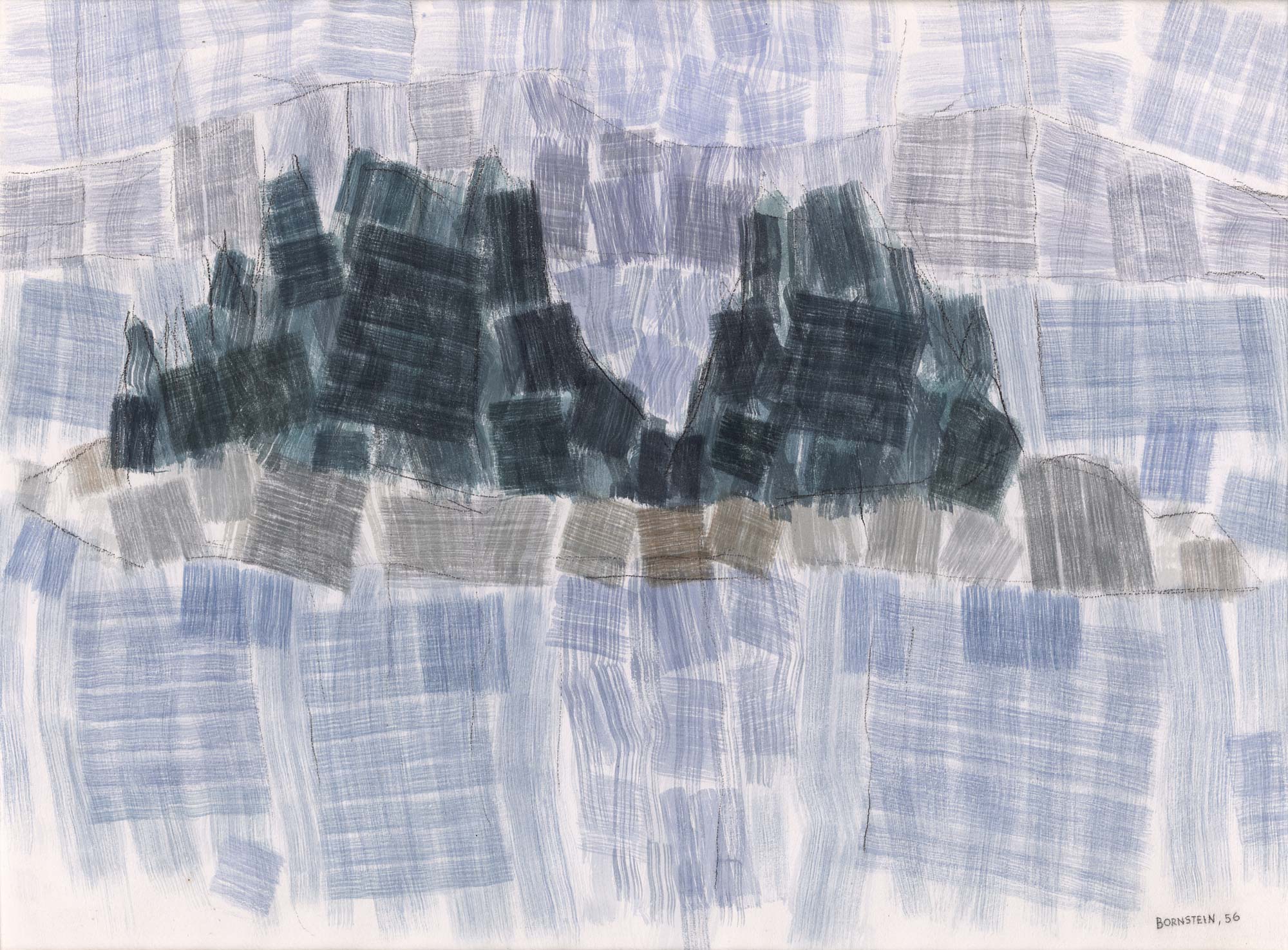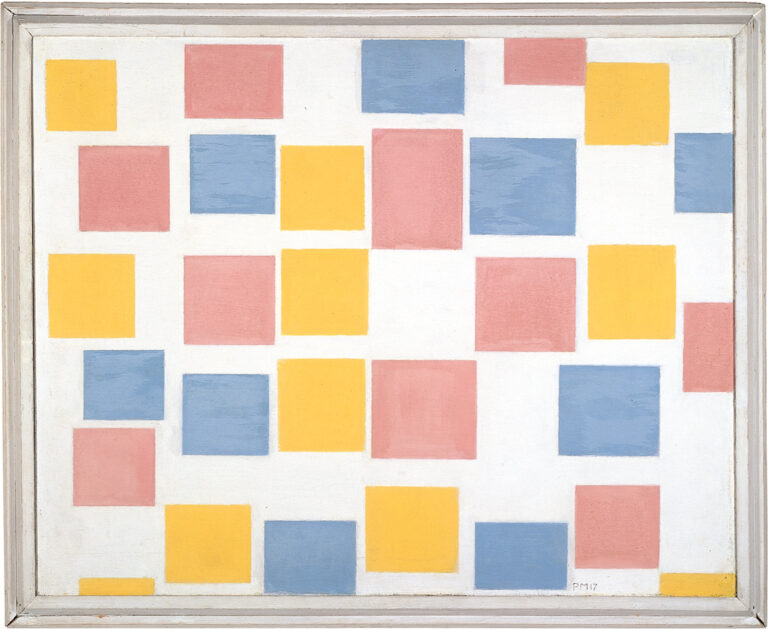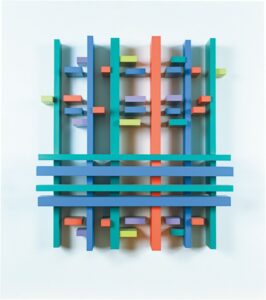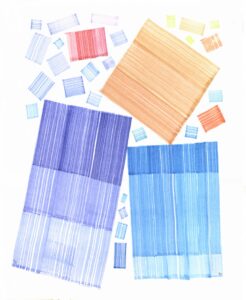The Island 1956

Eli Bornstein, The Island, 1956
Watercolour on paper, 53.5 x 74 cm
Collection of the artist
The Island was the last representational watercolour painting that Bornstein made before he started to construct purely abstract reliefs. Working on the coast of Maine, he crafted a landscape of trees, rocks, and water using a vocabulary of similarly sized and semi-transparent rectangular swatches. The variations of green, brown, and blue-grey lines define the natural elements, but otherwise matter dissolves into shimmering light, the island like a mirage emerging from mist.

The Island incorporates the succession of the lessons that Bornstein had been learning over the past half decade from major movements in European modernism: Impressionism, Post-Impressionism, and Cubism. The latter, as he applies it in Saskatoon, organizes his pastel colours into a dynamic, tightly knit decorative pattern work. But something else is afoot in The Island, where Bornstein unknits all of that so that instead he can evenly spread his planar components—now individualized and similarly sized—across the whole expanse of his white paper ground and into its very corners.
It may not be self-evident at first glance, but Bornstein has taken on a new challenge here, namely that of the Dutch artist Piet Mondrian (1872–1944), who himself was in transition from representation to abstraction at the end of the 1910s. Bornstein’s model for The Island’s dispersals was no doubt a series of Mondrian paintings from 1917 entitled Compositions with Color Planes. It is fair to suppose so because in a 1958 article published in the periodical Structure, he juxtaposes Mondrian’s Composition with Color Planes 2,1917, to one of his own first reliefs, underscoring its importance to this moment of his own artistic development. Mondrian, in his series, deploys an assembly of small rectangles of muted reds, yellows, and blues, evenly distributing them across a white ground. They are not absolute rectangles, and their irregularity, much like those of The Island, causes them to waver ever so slightly, as if still existing in what may be Mondrian’s last faint acknowledgement of illusionistic space.

 About the Author
About the Author
 More Online Art Books
More Online Art Books
 Acknowledgements
Acknowledgements